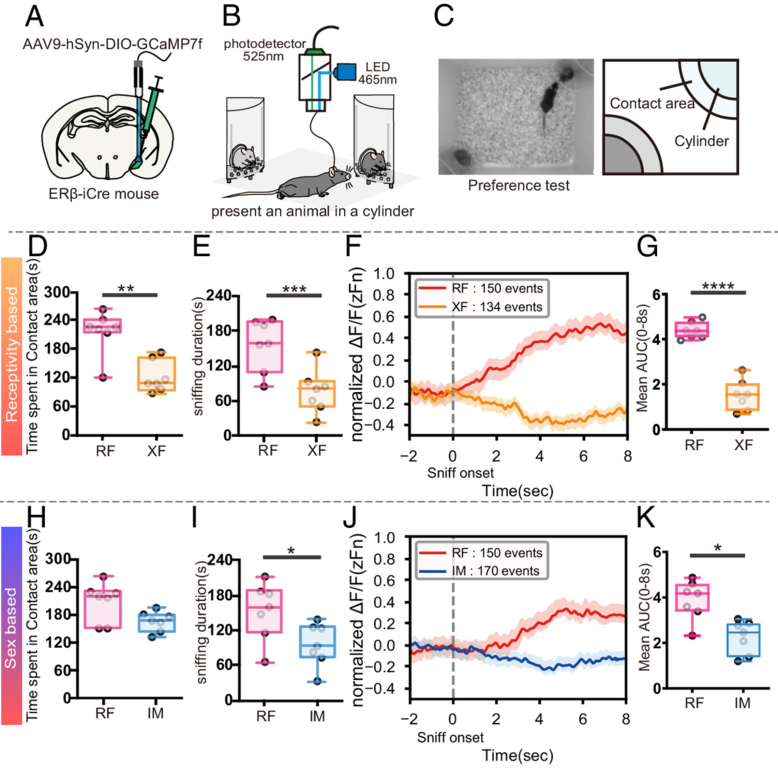・By introducing a new Cre mice line for estrogen receptor beta (ERβ), we described the function of ERβ-expressing neurons in the posterodorsal part of the medial amygdala (MeApd-ERβ+ ) and characteristics of their neuronal activity during preference tests.
・Using fiber photometry and DREADD techniques we have found that MeApd-ERβ+ neurons have a specific role in receptivity-based (receptive female vs. nonreceptive female) preference but not in sex-based (receptive female vs. intact male) preference in male mice.
・We have also described this specific role of MeApd-ERβ+ neurons is achieved by regulating the neuronal activity of downstream BNSTp neurons during receptivity-based, but not sex-based, preference tests.
Abstract
The processing of information regarding the sex and reproductive state of conspecific individuals is critical for successful reproduction and survival in males. Previous studies suggested the involvement of estrogen receptor beta (ERβ) expressed in the medial amygdala (MeA) in male preference towards receptive females (RF). To further delineate the role played by ERβ in the MeA in the neuronal network regulating male preference, we developed a new ERβ-iCre mouse line using the CRISPR-Cas9 system. Fiber photometry Ca2+ imaging revealed that ERβ-expressing neurons in the postero-dorsal part of the MeA (MeApd-ERβ+ neurons) were more active during social investigation toward RF compared to co-presented non-receptive female (XF) or gonadally intact male (IM) mice in preference tests. Chemogenetic inhibition of MeApd-ERβ+ neuronal activity abolished a preference to RF in “RF vs. XF” but not “RF vs. IM” tests. Analysis with cre-dependent retrograde tracing viral vectors identified the principal part of the bed nucleus of stria terminalis (BNSTp) as a primary projection site of MeApd-ERβ+ neurons. Fiber photometry recording in the BNSTp during a preference test revealed that chemogenetic inhibition of MeApd-ERβ+ neurons abolished differential neuronal activity of BNSTp cells as well as a preference to RF against XF but not against IM mice.
Benefit
These findings demonstrate for the first time that MeApd-ERβ+ neuronal activity is required for expression of receptivity-based preference (i.e., RF vs. XF) but not sex-based preference (i.e., RF vs. IM) in male mice. Our findings contribute to a better understating of the function of estrogen receptor-expressing neurons in the neuronal network for the male-typical reproductive behaviors.
Market Application
By understanding the state of sex steroid hormones in the brain and their interaction with neurons possessing sex hormone receptors, we can expect to elucidate the neural basis supporting social behaviors, as well as the regulatory mechanisms of sociability and emotionality. Further research in this area can lead to a wide range of applications, from biological research to therapeutics.
Publications
https://www.pnas.org/doi/10.1073/pnas.2305950120



